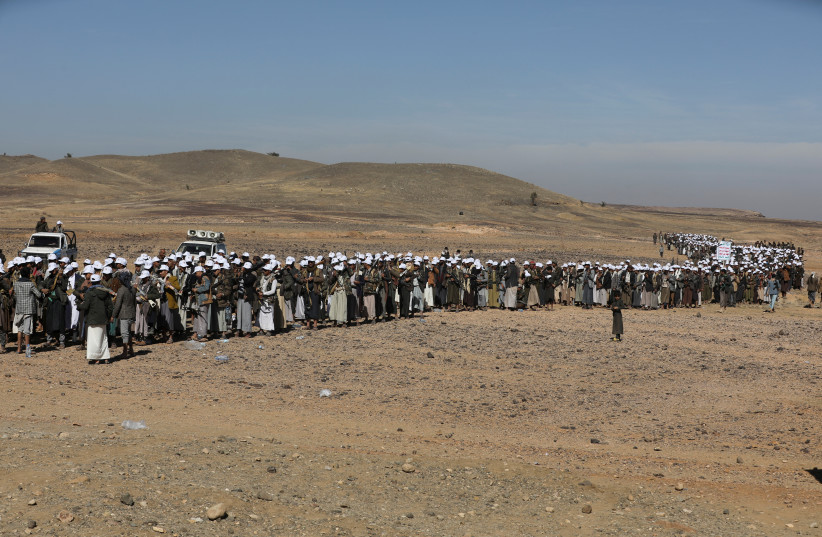US and UK armed forces carried out airstrikes on eight sites in Yemen on Monday night, an important symbol of the decision by the US and allied countries to show that they mean business when it comes to stopping Iranian-backed Houthi aggression.
The Houthis have sought to blockade the Red Sea while allowing Russian- and Chinese-linked ships to pass. Freedom of navigation is a key to global trade and has also been a key foundation of US foreign policy over the last 150 years.
US Central Command said on Tuesday morning that “as part of ongoing international efforts to respond to increased Houthi destabilizing and illegal activities in the region, US Central Command forces, alongside UK Armed Forces and with the support from Australia, Bahrain, Canada, and the Netherlands, conducted strikes on eight Houthi targets in Iranian-backed Houthi terrorist-controlled areas of Yemen.”
"Five Eyes" network is cracking down on Houthi attacks and capabilities
The support of Bahrain, Canada, Australia, and the Netherlands is important. Canada, Australia, and the UK are all part of the “Five Eyes” network of countries, along with the US and New Zealand. New Zealand has not backed the attacks, but it is also the smallest of the Five Eyes.
The role of Bahrain in backing the strikes is also important, as it hosts the US Fifth Fleet. The US says that it targeted several areas in Yemen, including “missile systems and launchers, air defense systems, radars, and deeply buried weapons storage facilities.”

What this means is that the strikes against Yemen, of which there have been several over the past month, have now entered a new phase. This phase is designed to degrade the Houthis’ capabilities. The Yemeni rebel group has built up an Iranian-backed arsenal of drones and missiles and uses these weapons to target ships. They have become more precise in their targeting over the last several years.
Houthis have been stockpiling offensive capabilities for years
This is part of a wider Iranian campaign against shipping that dates back to 2019, when, during that same year, the Iranians also used cruise missiles and drones to attack Saudi Arabia. The Houthis are a kind of test bed for Iranian precision drone and ballistic missile attacks. While it has been known since 2015 that the Iranians were sending parts for missiles and drones to Yemen, the threat of the Houthis to shipping emerged only recently.
Iran operationalized the Houthis in the wake of the Hamas attack on Israel on October 7. It has used the Houthis to try to blockade Israel and carry out attacks on a plethora of ships. To defeat the Houthis, their missile silos and stockpiles will have to be destroyed.
In addition, it appears that the strikes have also targeted air defense systems and areas near airports in Yemen. The US Central Command has said that “these strikes are separate and distinct from the multinational freedom of navigation actions performed under Operation Prosperity Guardian.”
In the UK, Britain’s Defense Minisrty said that four Air Force Typhoon jets struck “multiple targets at two military sites in the vicinity of Sanaa airfield.” The strikes were “aimed at degrading Houthi capabilities,” said UK Defense Secretary Grant Shapps. The Houthis said that the strikes targeted Al-Dailami Air Base and Al-Hafa, near Sanaa.
The Houthis vowed the attacks would “never go unanswered.” Iranian Tasnim media reprinted the Houthi threats to retaliate. However, the Houthis may now have fewer weapons with which to retaliate.
